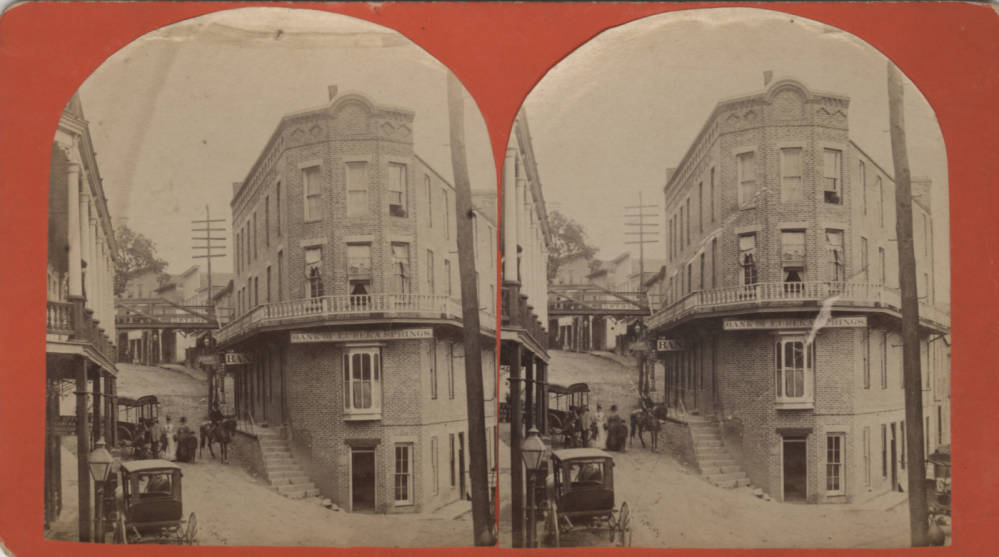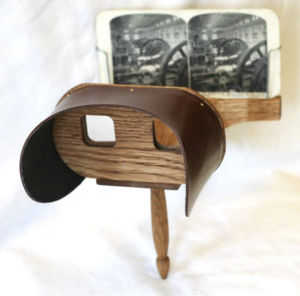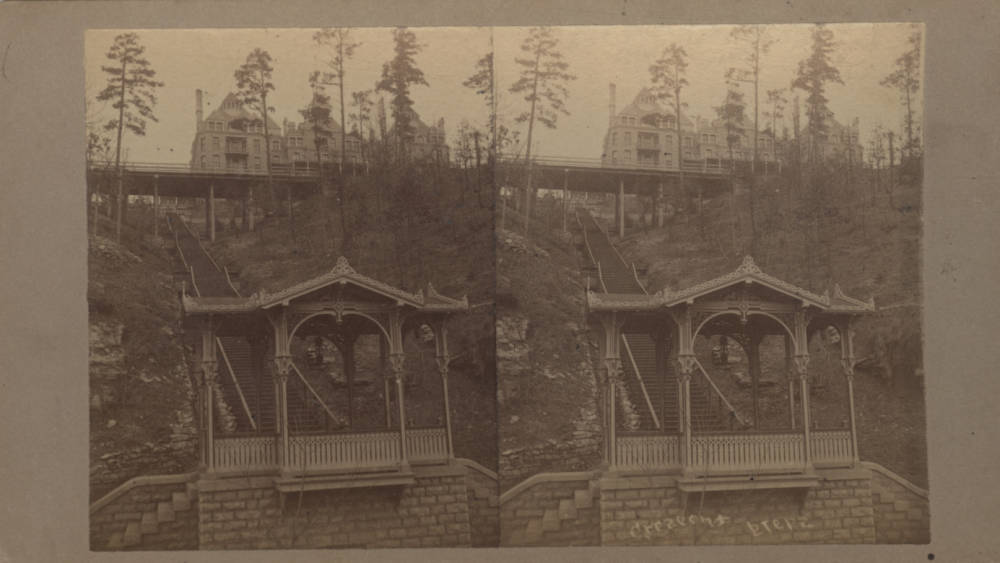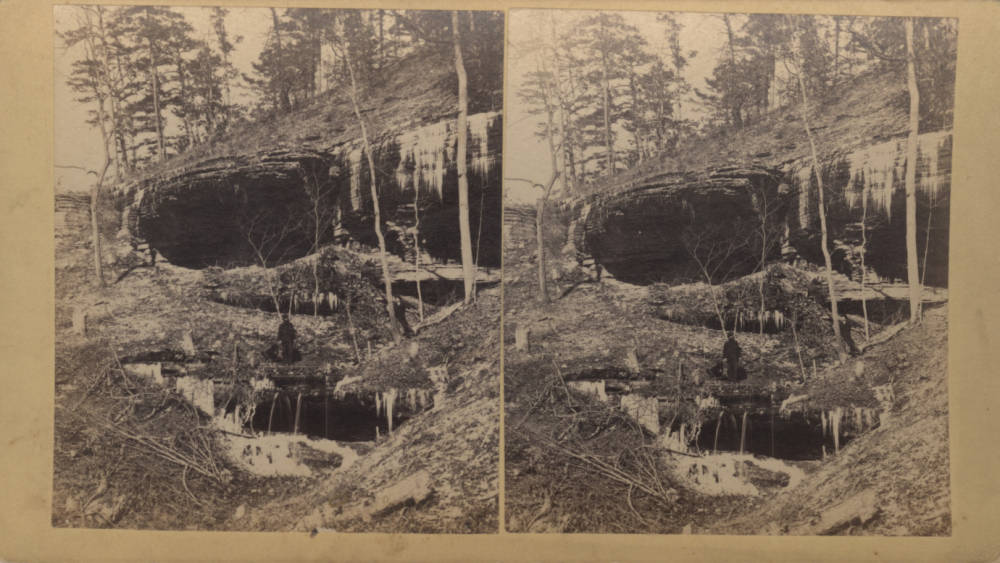calsfoundation@cals.org
Eureka Springs in Stereo
Although the population is only around 2,000, Eureka Springs is arguably one of the most interesting locales in Arkansas. This northwestern Arkansas tourist town situated in the Ozark Mountains is one of two county seats in Carroll County and home to legendary healing springs. The city draws a diverse tourist crowd every year and is known for its spas and bathhouses. During the twentieth century, the town attracted an eclectic population, and today it is a mecca for artists, writers, the religious community, and the LGBTQ+ community.
Speaking of Eureka Springs, the Butler Center for Arkansas Studies at the CALS Roberts Library recently digitized almost eighty stereoviews (sometimes called stereographs) from Eureka Springs. They’re great pieces of Arkansas history and fascinating to look at.

If you don’t know what stereoviews are, here is some explanation from the Library of Congress:
 Stereographs consist of two nearly identical photographs or photomechanical prints, paired to produce the illusion of a single three-dimensional image, usually when viewed through a stereoscope. Typically, the images are on card mounts, but they may take the form of daguerreotypes, glass negatives, or other processes. Stereographs were first made in the 1850s and are still made today. They were most popular between 1870 and 1920.
Stereographs consist of two nearly identical photographs or photomechanical prints, paired to produce the illusion of a single three-dimensional image, usually when viewed through a stereoscope. Typically, the images are on card mounts, but they may take the form of daguerreotypes, glass negatives, or other processes. Stereographs were first made in the 1850s and are still made today. They were most popular between 1870 and 1920.
In 1851 stereo daguerreotypes were exhibited for the first time to the general public at the London International Exhibition (Crystal Palace). Shortly thereafter, American photographers began making stereographs. By 1860 both amateur photographers and publishing firms were making stereographs. The major stereo publishers sold their views by mail order, door-to-door salesmen, and in stores. Stereographs were sold individually and in boxed sets.
Stereographs are usually mounted. They were typically published with caption information printed under the image or on the back of the mount. The mount also provided information about the publisher, photographer, and sometimes the series or a list of views available from the photographer or publisher.
Stereographs were collected by many middle-class families in the late 19th century. People acquired stereographs of tourist sites they had visited, as well as exotic locales that they would only experience through the wonder of the stereoscope. Viewing stereographs was a common activity, much like watching television or going to the movies today. Stereoviews were also used as an education tool in classrooms.
You can check out the Butler Center’s collection of digitized Eureka Springs stereoviews, including the two below, here.


And read all about Eureka Springs (and view more photographs, only not in stereo!) on the CALS Encyclopedia of Arkansas here.
By Brian Robertson, manager of the Research Services Division at the Butler Center for Arkansas Studies at the CALS Bobby L. Roberts Library of Arkansas History & Art




